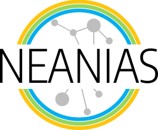The NEANIAS WP3 “Atmospheric Thematic services” is focused on the co-design of four services in the atmospheric environment, addressing land-atmosphere interfaces, appropriate for the Research and Development user-communities.
The atmospheric services will deliver a springboard of tools to enrich the workflows of a wide range of targeted users from academic/research institutions and industrial stakeholders, e.g. engineering of air pollution control systems and related technology companies, and also end-users at national institutional level such as Civil Protection Agencies. Interest can arise also from more regional governmental institutions such as Regions and Municipalities, especially in relation to detection and evaluation of atmospheric anthropogenic or natural pollutants releases in the atmosphere. Conversely, the quantitation of their man made or natural sinks.
The first service A1, named ATMO-FLUD, provides the users the ability to calculate atmospheric fluxes of Energy and Green House Gases across the terrestrial and oceanic interfaces, using the “Eddy Covariance” and the “GRADIENT” method and related algorithms. Explained in detail in the documentation that accompanies this service, are the fundamental scientific principles that support this method, the limitations that apply for these calculations and the format of the data input.
The A2 Service comprises two services: One named “ATMO-STRESS”, calculates the trajectories of tectonic stress based on a series of local data of stress, and presents them as a map (stress field). It permits the input of any data related to stress, spanning from earthquake focal mechanism solutions, to stress calculated from fault slip data sets, to geotechnical measurement of in-situ stresses. The second service, named “ATMO-SEISM”, compares a series of parameters regarding the seismicity of a region and the variation of gas emission in the atmosphere, in order to find possible correlations. It automatically produces a series of graphs that correlate all the possible parameters, spanning from latitude and longitude of earthquakes, their foci, their depth, magnitude, distance from the point of gas measurement, gas concentrations, etc.
Finally, the A3 service, named “ATMO-4CAST” provides users the ability to obtain and visualize meteorological and air quality forecasts based on their own datasets. The service is hosted on a centralized server, which can receive different types of data, in GRIB or JSON formats, and the necessary model parameters and, passing them through popular models such as WRF-ARW and CMAQ, visualize the obtained outputs (e.g., a map with a visualization of the forecasted air temperature). Such a service is useful for users who have their own datasets but do not have the required skills to build and run such complex software environments.
Learn all about WP3 services at Atmosphere Services.
